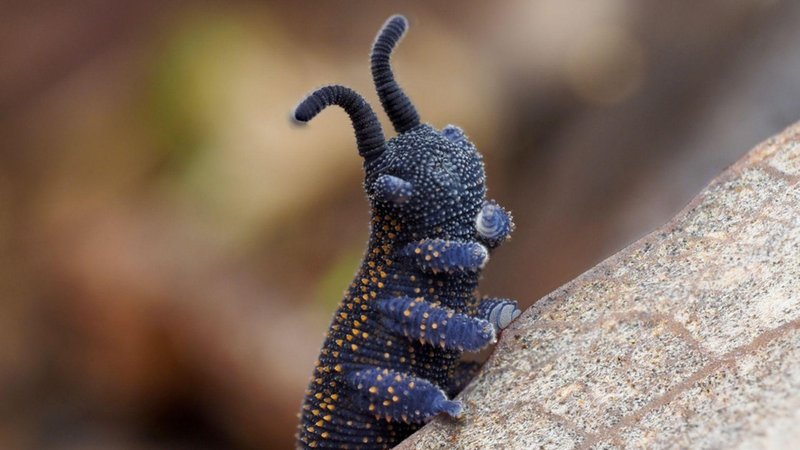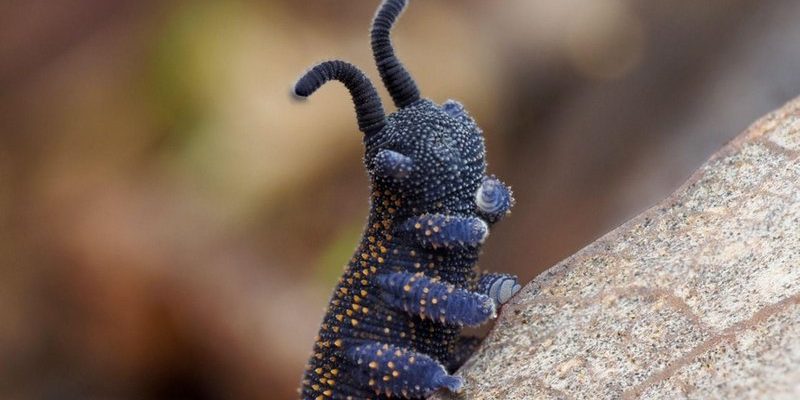
So, why velvet worms, you ask? Well, they occupy a special place in the evolutionary tree. Their unique features and behaviors can help students understand some of the key concepts of evolution—like adaptation, natural selection, and the diversity of life. Imagine using a creature that has survived for over 500 million years to help teach your class about evolution. It’s both exciting and enlightening!
What Are Velvet Worms?
Velvet worms are soft-bodied, segmented creatures that resemble the cross between a caterpillar and a slug. They can’t be classified as insects, arachnids, or mollusks, which makes them fascinating study subjects in the animal kingdom. These critters thrive in the humid, dark environments of forests, often hiding under leaf litter or in tree bark. Some species can grow up to 15 centimeters long and have a velvety texture, hence the name.
With their short, stubby legs and unique slime-glands, velvet worms are incredible hunters. They can shoot a sticky substance to trap their prey, usually insects or small arthropods. Picture this: you’re in a dark forest, and suddenly, a velvet worm launches a slime projectile like a superhero catching bad guys. This method of hunting not only showcases their evolution but also demonstrates their adaptations to their environment.
Their fascinating features make them an exciting way to engage students with the principles of evolution. Plus, learning about velvet worms can lead to discussions about biodiversity and the roles these creatures play in their ecosystems. Isn’t it cool to think that such ancient animals can teach us so much about life today?
Why Use Velvet Worms in Teaching Evolution?
You might be wondering why velvet worms should be part of your evolution curriculum. Well, here’s the thing: these creatures allow students to grasp complex concepts through a hands-on approach. When students can see and maybe even interact with living examples, it deepens their understanding.
For instance, discussing natural selection becomes more tangible when you can point to the physical adaptations of velvet worms. Their sleek bodies, for example, help them navigate their moist habitats effectively. This makes it easy to illustrate how those adaptations may have helped their ancestors survive and thrive over millions of years.
Moreover, velvet worms are part of a larger group called Panarthropoda, which also includes insects and crustaceans. Teaching about their evolutionary lineage can provide insights into how different species are interconnected. It’s like connecting the dots in the puzzle of life, showing students that all creatures, including humans, share a common ancestry.
Classroom Activities with Velvet Worms
Integrating velvet worms into your lessons doesn’t have to be complicated. Here are some engaging activities you can use to teach about evolution:
- Observation: If possible, bring in live velvet worms for students to observe. Have them note their behaviors, physical characteristics, and habitat.
- Dissection: For those who are comfortable, you could perform a simple dissection (if you can obtain them ethically). This allows students to see and understand their anatomy up close.
- Research Projects: Encourage students to explore various aspects of velvet worms, from their habitats to their evolutionary significance. Presenting their findings can foster critical thinking.
- Comparative Analysis: Have students compare velvet worms to other organisms like insects or mollusks, discussing similarities and differences in adaptations and habitats.
These activities not only make learning fun but also provide students with practical knowledge about evolution and biology. Plus, they get to be scientists for a day!
Connecting Velvet Worms to Evolutionary Concepts
When teaching about evolution, context is vital. Velvet worms provide excellent opportunities to connect various evolutionary concepts. For example, their adaptations help address how organisms change over time in response to their environments.
Another crucial concept is speciation, where new species arise from a common ancestor. You can discuss how velvet worms have evolved separately from other arthropods, showcasing how environmental pressures can lead to the development of distinct species. It’s a tangible way to illustrate how isolation and adaptation work together in the natural world.
Furthermore, you can highlight the concept of extinction. Many species related to velvet worms have gone extinct, while the velvet worms themselves have persisted. Talking about why some species survive while others don’t can spark important conversations about resilience and change in nature.
Challenges in Working with Velvet Worms
Of course, working with live creatures in the classroom can have its challenges. Velvet worms are sensitive to their environment and can be tricky to keep alive for long periods. It’s essential to create a habitat that mimics their natural surroundings—think moist, dark, and cool spaces.
Another challenge might be accessing velvet worms themselves. They aren’t the easiest creatures to come by. However, many biological supply companies offer them for educational purposes. Be sure to check that they’re ethically sourced.
Lastly, while many students may find the concept of velvet worms exciting, some might be squeamish about handling live animals. It’s important to create a supportive environment where students feel comfortable expressing their feelings toward the creatures. Providing alternative activities for those who prefer not to engage directly can also be helpful.
Using velvet worms in the classroom opens up a whole new world of teaching evolution. These quirky creatures not only capture attention but also provide valuable lessons about adaptation, survival, and the interconnectedness of all life forms. By integrating hands-on activities and discussions, you can create a richer, more engaging learning experience for your students.
So, the next time you’re planning a lesson on evolution, consider introducing velvet worms. They might just be the secret ingredient you need to spark curiosity and deepen understanding in your classroom. Plus, who wouldn’t love the chance to learn about a creature that’s been around for 500 million years? It’s not just biology; it’s a journey through time!

